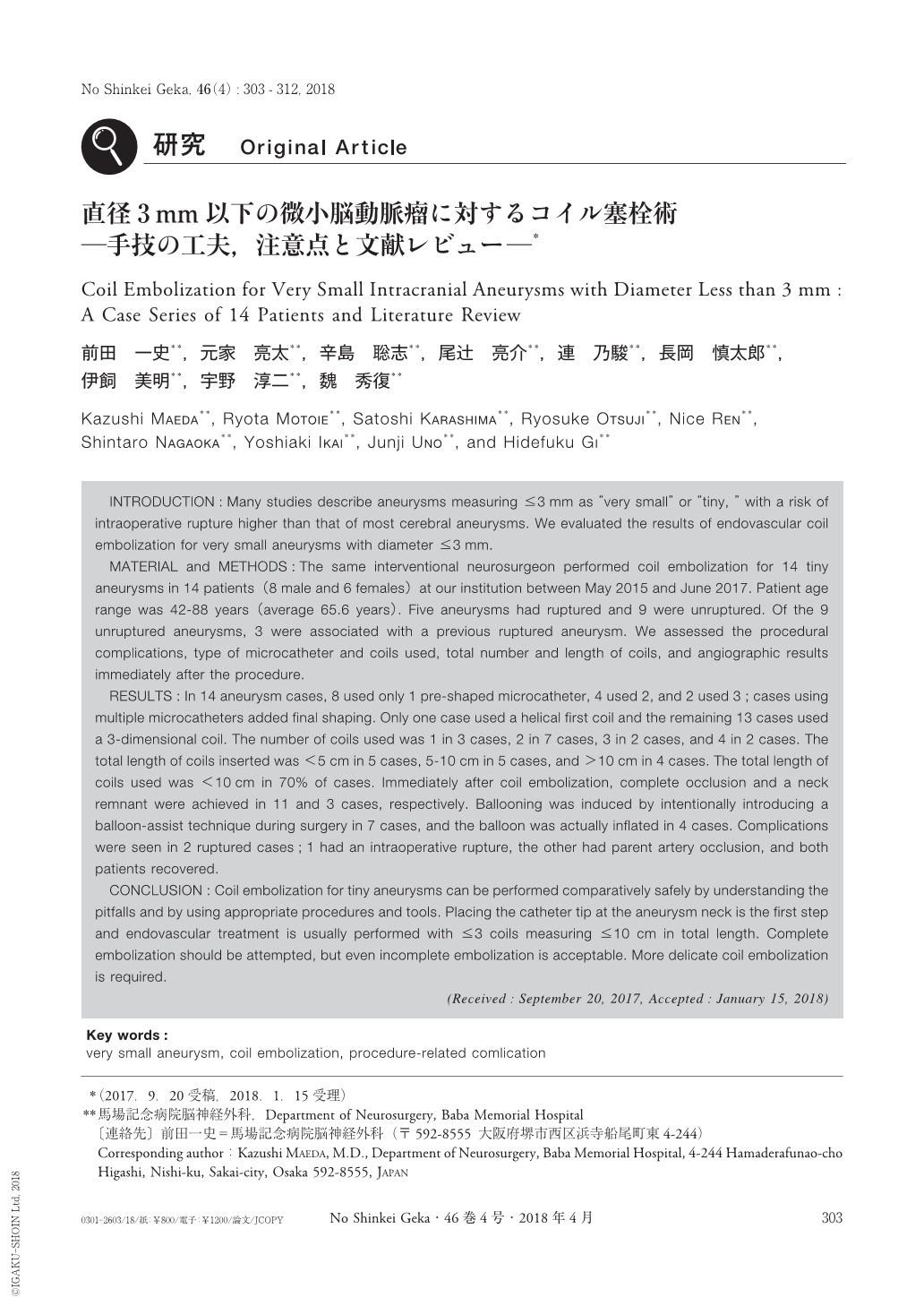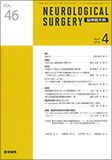Japanese
English
- 有料閲覧
- Abstract 文献概要
- 1ページ目 Look Inside
- 参考文献 Reference
Ⅰ.はじめに
脳動脈瘤に対するコイル塞栓術はその有効性が多数報告され,今後,破裂,未破裂例を問わず,ますます治療件数は増加していくと思われる.3mm以下の動脈瘤を「微小動脈瘤」,「very small aneurysm」あるいは「tiny aneurysm」と表現する文献が多く1,2),術中破裂の危険性が一般の脳動脈瘤に比べて高く,手技的にも難易度が高いとされる3,16,26).今回われわれは,当院で施行した3mm以下の微小脳動脈瘤コイル塞栓術に関して検証を行い,治療の現状や手技の工夫について,文献的考察を交えて報告する.
INTRODUCTION:Many studies describe aneurysms measuring ≤3mm as “very small” or “tiny, ” with a risk of intraoperative rupture higher than that of most cerebral aneurysms. We evaluated the results of endovascular coil embolization for very small aneurysms with diameter ≤3mm.
MATERIAL and METHODS:The same interventional neurosurgeon performed coil embolization for 14 tiny aneurysms in 14 patients(8male and 6 females)at our institution between May 2015 and June 2017. Patient age range was 42-88 years(average 65.6 years). Five aneurysms had ruptured and 9 were unruptured. Of the 9 unruptured aneurysms, 3 were associated with a previous ruptured aneurysm. We assessed the procedural complications, type of microcatheter and coils used, total number and length of coils, and angiographic results immediately after the procedure.
RESULTS:In 14 aneurysm cases, 8 used only 1 pre-shaped microcatheter, 4 used 2, and 2 used 3;cases using multiple microcatheters added final shaping. Only one case used a helical first coil and the remaining 13 cases used a 3-dimensional coil. The number of coils used was 1 in 3 cases, 2 in 7 cases, 3 in 2 cases, and 4 in 2 cases. The total length of coils inserted was <5 cm in 5 cases, 5-10 cm in 5 cases, and >10 cm in 4 cases. The total length of coils used was <10cm in 70% of cases. Immediately after coil embolization, complete occlusion and a neck remnant were achieved in 11 and 3 cases, respectively. Ballooning was induced by intentionally introducing a balloon-assist technique during surgery in 7 cases, and the balloon was actually inflated in 4 cases. Complications were seen in 2 ruptured cases;1 had an intraoperative rupture, the other had parent artery occlusion, and both patients recovered.
CONCLUSION:Coil embolization for tiny aneurysms can be performed comparatively safely by understanding the pitfalls and by using appropriate procedures and tools. Placing the catheter tip at the aneurysm neck is the first step and endovascular treatment is usually performed with ≤3 coils measuring ≤10 cm in total length. Complete embolization should be attempted, but even incomplete embolization is acceptable. More delicate coil embolization is required.

Copyright © 2018, Igaku-Shoin Ltd. All rights reserved.


